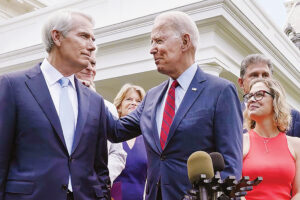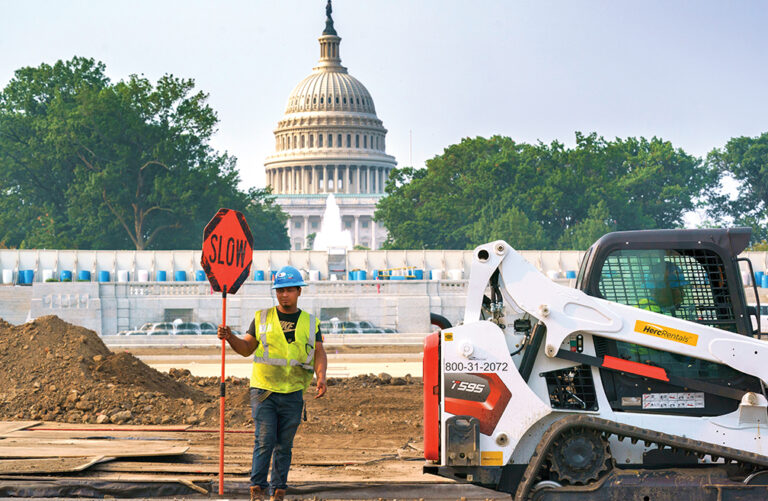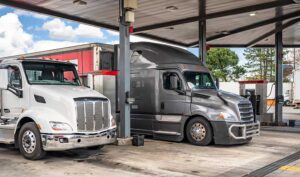The much-debated $1 trillion bipartisan Infrastructure Investment and Jobs Act was passed by the U.S. Senate August 10 with a vote of 69-30, with 19 Republican senators joining Democrats to swing the passage of the 2,700-page bill. The bill’s next stop is the U.S. House of Representatives, which is in recess until mid-September.
“What we are doing here today also demonstrates to the American people that we can get our act together on a bipartisan basis to get something done. We can do big things,” noted Sen. Rob Portman of Ohio, the lead Republican negotiator after the bill’s passage on August 10.
“There’s been detours and everything else, but this will do a whole lot of good for America,” said Democratic Majority Leader Chuck Schumer of New York.
The measure proposes nearly $550 billion in new spending over five years in addition to current federal authorizations for public works that will reach virtually every corner of the country — a potentially historic expenditure that President Joe Biden has put on par with the building of the transcontinental railroad or interstate highway system.

Under the provisions of the bipartisan Senate bill, $110 billion of the $1 trillion in funding would go to the nation’s roads and bridges; $40 billion of that $110 billion is earmarked for bridges. There are also funds to shore up coastlines against climate change, protect public utility systems from cyberattacks and modernize the electric grid. Public transit would get a boost, as would airports and freight rail. Most lead drinking water pipes in America could be replaced.
“TCA is very pleased to see the infrastructure bill pass through the Senate, and we commend our elected leaders for taking a bipartisan approach to this much-needed investment in our nation’s transportation network,” said Truckload Carriers Association (TCA) Manager of Government Affairs Kathryn Pobre.
American Trucking Associations President and CEO Chris Spear also applauded the Senate’s passage of the measure, noting, “today, the Senate put America ahead of itself” after years of empty promises.
“Passage of this bipartisan infrastructure bill is a groundbreaking step toward revitalizing America’s decaying roads and bridges, supporting our supply chain and economy with the foundation they need to grow, compete globally, and lead the world,” Spear said.
Folded into the Senate’s bill are several provisions that would directly impact the trucking industry, including:
- A vehicle-miles-traveled (VMT) pilot program for both commercial and passenger vehicles;
- An under-21 apprenticeship pilot program that would allow younger drivers to engage in interstate commerce;
- A driver compensation study that would examine the impacts of different methods of compensation on safety as well as driver retention;
- A Women of Trucking Advisory board to encourage women to enter the industry;
- A Truck Leasing Task Force to examine truck-leasing and lease-purchase agreements between motor carriers and owner-operators to help prevent predatory practices;
- A comprehensive study on the causes of and contributing factors of commercial vehicle crashes;
- An automatic emergency braking (AEB) mandate that would require all new commercial vehicles to be equipped with AEB technology within two years; and
- A requirement that rear trailer underride guard standards be strengthened. This measure also calls for research on the effectiveness and impact of side underride guards, as well as the formation of an Advisory Committee on Underride Protection.
Two items that are notably absent from the Senate’s Infrastructure Investment and Jobs Act are funding for additional safe truck parking across the nation and an increase in minimum insurance requirements for motor carriers.
While the omission of truck parking funding is generally considered a “minus” to most in the trucking industry, many trucking companies would undoubtedly breathe a sigh of relief that the controversial proposal to increase minimum liability insurance requirements from $750,000 to $2 million does not appear in the Senate bill.
Owner-Operators Independent Drivers Association (OOIDA) President and CEO Todd Spencer expressed disappointment in the final draft of the Senate bill, citing “the lack of dedicated funding to address the truck parking crisis” as a primary reason OOIDA does not support the legislation.
“We will continue to oppose surface transportation legislation that doesn’t prioritize the needs of professional drivers,” he said, adding, “Fortunately, the legislation does not increase minimum insurance levels and will invest hundreds of billions for roads, highways, and bridges.”
In addition to allocating $110 billion in funding for the nation’s roads and bridges, other key elements of the Senate bill include:
- $73 billion for modernizing the nation’s electric grid and expanding the use of renewable energy;
- $66 billion for passenger and freight rail, with funds to reduce Amtrak’s maintenance backlog and improve routes, and to make safety improvements to rail grade crossings;
- $65 billion to expand broadband access, particularly for rural areas and tribal communities;
- $55 billion for water and wastewater infrastructure, including funding to replace all of the nation’s service lines using lead pipe;
- $39 billion for public transit, which would be used to modernize bus and subway fleets and bring new service to communities;
- $21 billion to clean up superfund and brownfield sites, reclaim abandoned mine land, and cap obsolete gas wells;
- $17 billion for ports and $25 billion for airports to reduce congestion and address maintenance backlogs;
- $7.5 billion for electric vehicle charging stations, which the Biden administration says is critical to accelerating the use of electric vehicles to curb climate change; and
- $5 billion for the purchase of electric school buses and hybrids, reducing reliance on school buses that run on diesel fuel.
“We know this is not the finish line for this legislation, and so we encourage the House of Representatives to quickly pass the bill,” stated Pobre. “Our nation’s workforce of trucking heroes should not be forced to wait any longer for repairs and safety improvements to the roads and bridges which serve as their 24/7 workplace, and our country’s citizens deserve an infrastructure system which will ensure the goods and services upon which they rely are not delayed.”
The Associated Press contributed to this report.
Linda Garner-Bunch has been with The Trucker since 2020, picking up the reins as managing editor in 2022. Linda has nearly 40 years of experience in the publishing industry, covering topics from the trucking and automotive industry to employment, real estate, home decor, crafts, cooking, weddings, high school sports — you name it, she’s written about it. She is also an experienced photographer, designer and copy editor who has a heartfelt love for the trucking industry, from the driver’s seat to the C-suite.















